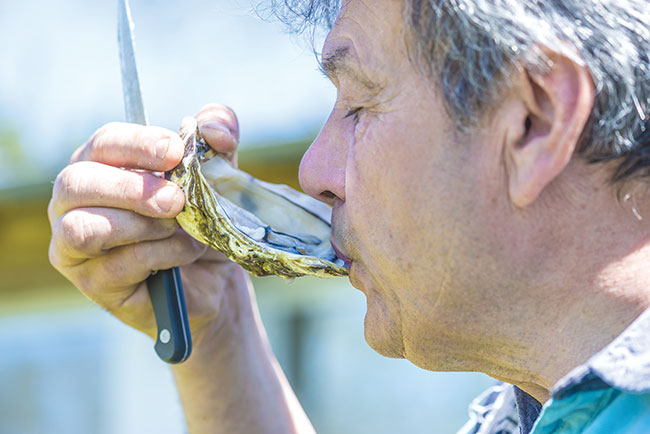
Researchers succeed in fortifying oysters with vitamins
September 16, 2020
By
Liza Mayer
 The retail market for oysters in shell is limited as people are not used to shucking and cooking them.
The retail market for oysters in shell is limited as people are not used to shucking and cooking them. Enhancing food with micronutrients to enhance people’s health isn’t new but integrating micronutrients in live oysters is.
Researchers at Cambridge University said they have come up with a cheap and effective way of doing this, and it adds only 0.9 percent to the retail price of oysters.
The researchers, David Willer and David Aldridge, chose Pacific oysters (Crassostrea gigas) as vehicle for vitamins A and D because of the world population’s deficiency in these vitamins and the bivalve’s widespread popularity as a food source.
The high cost of supplemental pills is another reason the duo explored this nutrient-delivery method. “Vitamin supplements or fortified food condiments are often expensive and seen as a luxury by the people who really need them,” they wrote.
The researchers found that the ideal duration and time to feed the oysters the “vitamin bullets” they devised is eight hours during the 48-hour depuration stage of bivalve production. This will effectively integrate nutrients into the bivalve gut and surrounding tissue.
“As humans consume the entire organism including the gut when they eat a bivalve, these nutrients will be available to humans,” the researchers wrote in their paper “Vitamin Bullets. Microencapsulated Feeds to Fortify Shellfish and Tackle Human Nutrient Deficiencies.”
While it is true that supplemental nutrients can be included into the feed of terrestrial farm animals, this is inefficient because feeds must be fed to animals for a far longer period of the animals’ lifetime in order to generate elevated nutrient levels in the animals’ tissue, they said.
The experiment showed Pacific oysters successfully consumed the microcapsules, resulting in elevated micronutrient levels in whole-organism tissue samples.
The study marks the first successful fortification of bivalves with micronutrients beneficial to human health via this method.
The next step is for further research studies and industry trials. “Taking these steps can provide stakeholders in aquaculture to make an invaluable contribution toward improving the quality and sustainability of our global food system,” they wrote.





